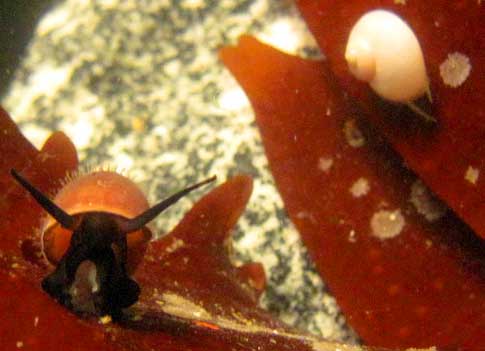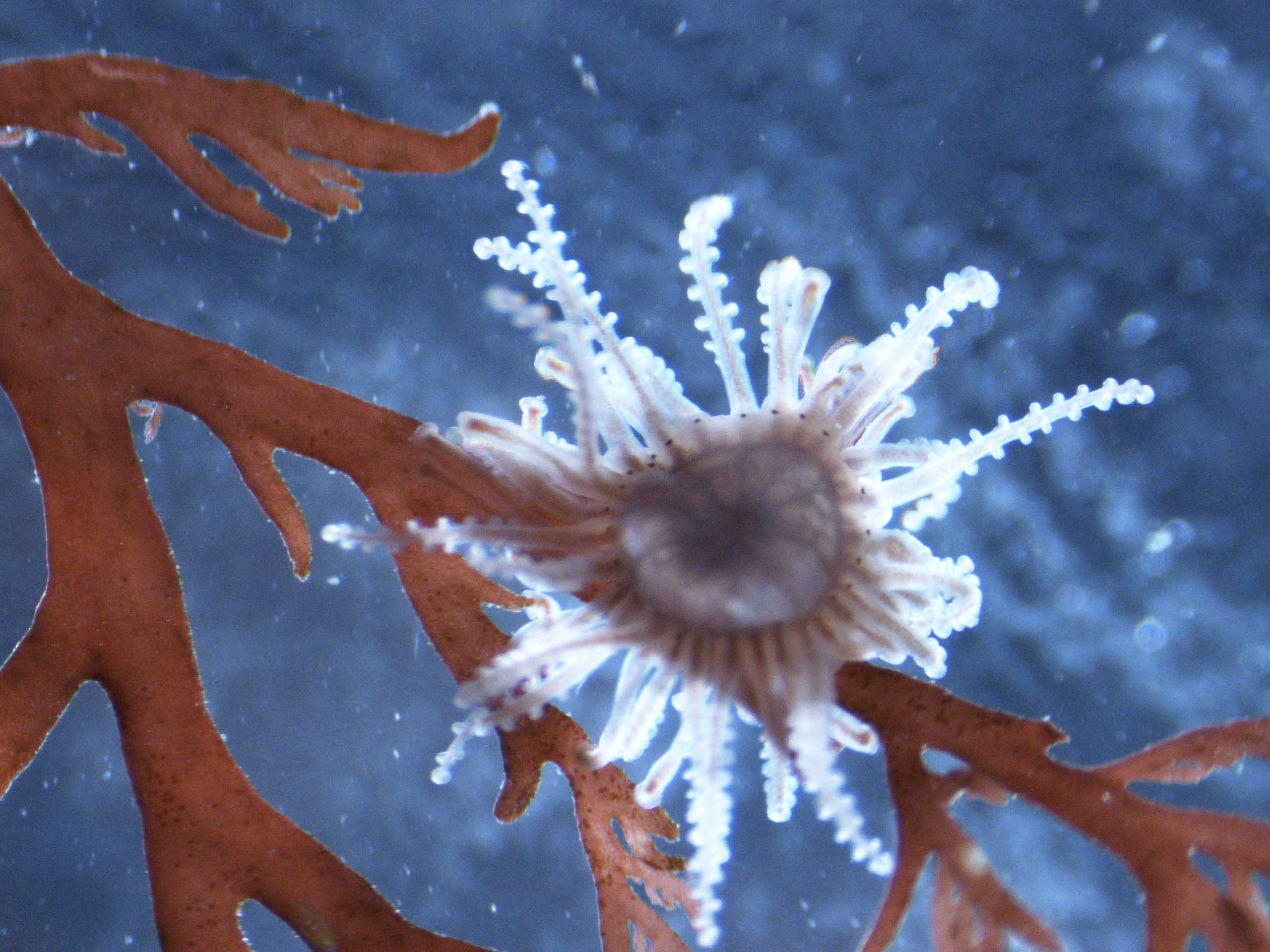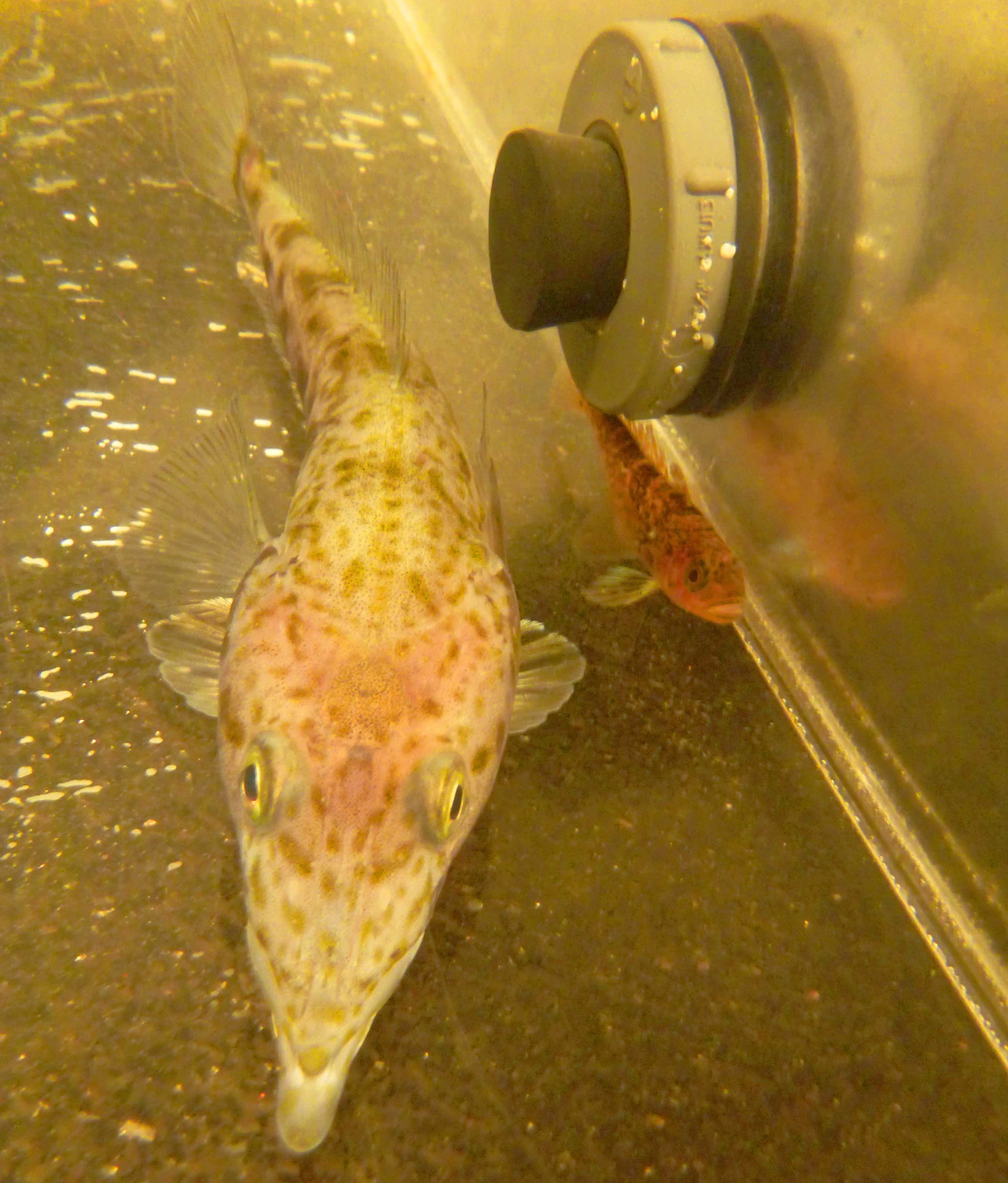
Every time we go diving to collect samples for our experiments (or food for the organisms we are maintaining in our experiments) we get a little by-catch. The by-catch we get is generally very small and either some type of invertebrate or seaweed that we weren’t necessarily intending to catch. Depending on what we are collecting there is a varying abundance and diversity of our by-catch. We commonly get a wide range of sizes of snails and limpets as well as amphipods and small sea stars.
I am bringing up the subject of by-catch because it is one my favorite parts about going through my collection bag after a dive. Of course this is second only to knowing that we collected what we need and as much as we planned. It is fun to be sorting through the algae and all of a sudden find something you have never seen before.
Today, we went diving to collect more Gondo (the amphipod Gondogeneia antarctica) so we can set up a new experiment, along with the seaweed intended for that experiment, and one other seaweed that I use to feed my amphipods in my experiments. As mentioned before, the best way to get Gondo is to get the algae it lives on. That meant that we were targeting 3 species of seaweed and needed to dive at a few spots to get all of these species. As Maggie mentioned before (and Kate before that), the weather has not been good for diving much of this month so we haven’t been getting out to collect everything we need on as regular a basis as we had been earlier in the season. That means we needed to get as many of our target species as possible while the gettin’s good.
Despite the gently falling snow, our diligent tenders (Maggie and Juliet, our volunteer tender for the day and the station science instrument technician extraordinaire) piloted our zodiac to all four of our intended dive sites for today. One site had unworkable conditions. It has been chilly for the last couple of days so by the time we had completed our second dive I was thankful for the extra layer I put on under my drysuit, otherwise the last dive would have been really cold. However, we made it through all of the dives and collected our three target seaweeds.
To collect all of our target organisms we decide at our daily morning meeting which dive sites have what we are looking for and then choose the one that is most likely to have the best diving conditions (for instance the known dive sites that are most protected from the prevailing ocean swell or wind). We usually have a few back-up sites in mind if we can’t go to one of our primary sites, which can happen for lots of reasons like a curious leopard seal is playing in the area or there is too much brash ice.
Once we get to the sites and get in the water (as described in previous posts) we search for our target species. Sometimes this can take coordination. For instance, when we collected the seaweed (Desmarestia menziesii) to get more Gondo, I held the big yellow mesh collecting bag we use for larger seaweed collections while Chuck carefully removed the seaweed from the bottom, smoothly and gently swooping all of the seaweed and quickly escaping amphipods into a fine mesh amphipod collection bag. Amphipod collection bags have super-fine mesh so none of the tiny amphipods we are trying to collect can escape, which means we can get all kinds of crazy by-catch in these bags.

All of our collected seaweeds immediately go into buckets of seawater for transfer back Palmer station for processing since we collect them all in mesh bags. The mesh bags in the buckets of seawater usually just get transferred to our flow-through tank at Palmer until they can be sorted, unless they need some other special treatment. That means that what ever was on the seaweed when we collected in the mesh bags is still there as long as it is bigger than the holes in the mesh.
Sometimes our by-catch is hiding in the seaweed, like the sea stars or small crustaceans, like the amphipods or isopods. Other times they are hiding on the seaweed, like small pink sea cucumbers or snails. We are pretty familiar with the species that end up as by-catch more often, however, there are still a lot of species that we don’t know, like this little guy that Maggie was able to take some pictures of underneath the dissection microscope while it was hanging out on one of the branchy red seaweeds we have been collecting more often this year.

However, today we caught one of the more charismatic by-catch I have seen so far… a little fish! Usually they move so quickly that they can quickly escape being caught. However, this little guy must have been hiding deep inside the braches of one of the D. menziesii we collected today because when we got back Chuck and Maggie found him while sorting through the samples. Right now he has a nice new home in a special “natural” tank being maintained by one of the fish researchers currently at Palmer Station. He is in good hands. In the image right he is the little brown fish hanging out (in the one part of the tank that I don’t think looks very natural) with a lighter colored dragon fish (the dragon fish’s name is Archie by the way, Thomas has been having fun naming his fish).
Hopefully he will be good company. Most of the by-catch I have talked about so far is all animal, but we do get some seaweed by-catch too. I like this by-catch because it is often nice to press (like Maggie described in our most recent post). Depending on what it is, it can also sometimes be used in our other experiments but most of the time we “release” the algae and critters back to the ocean.